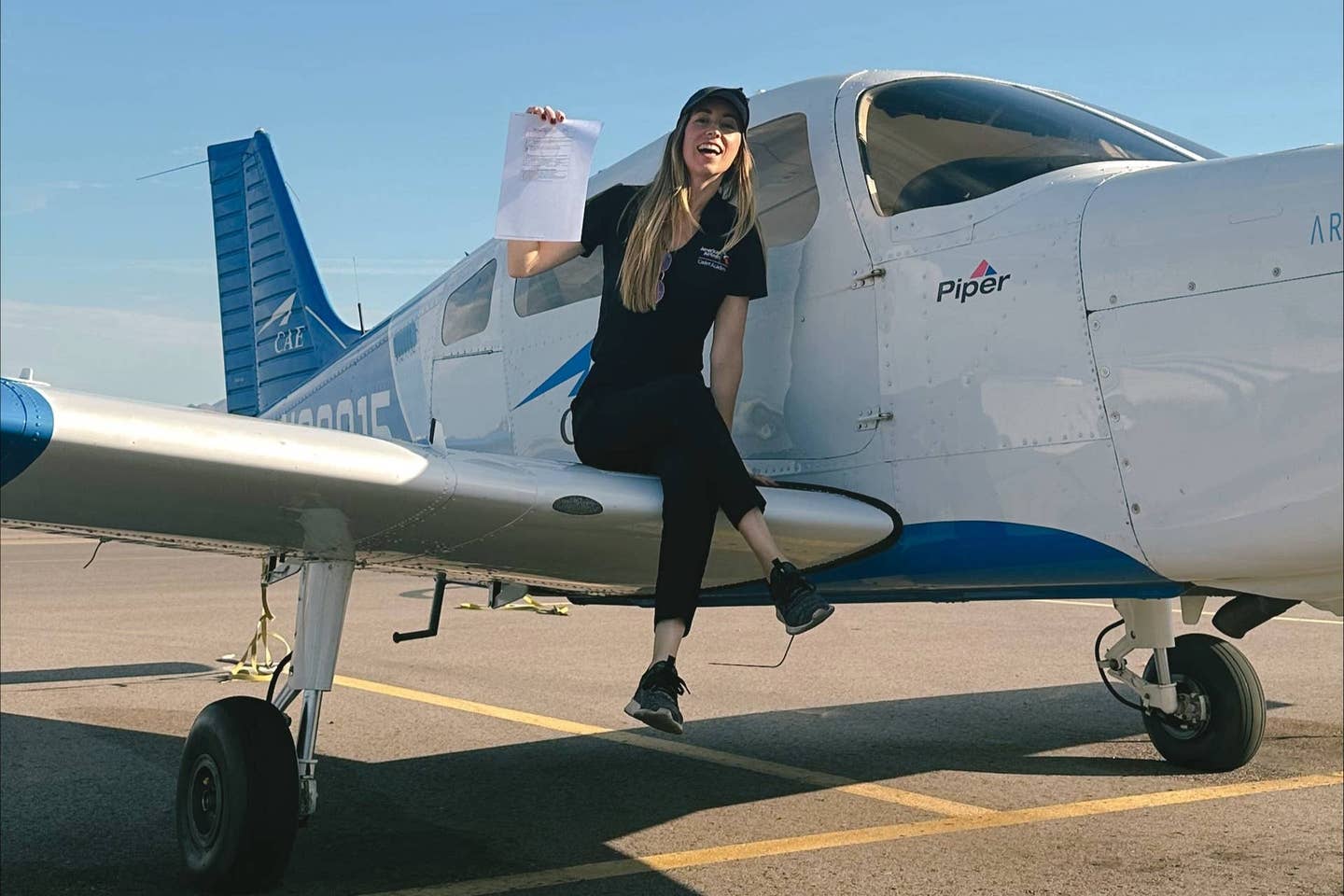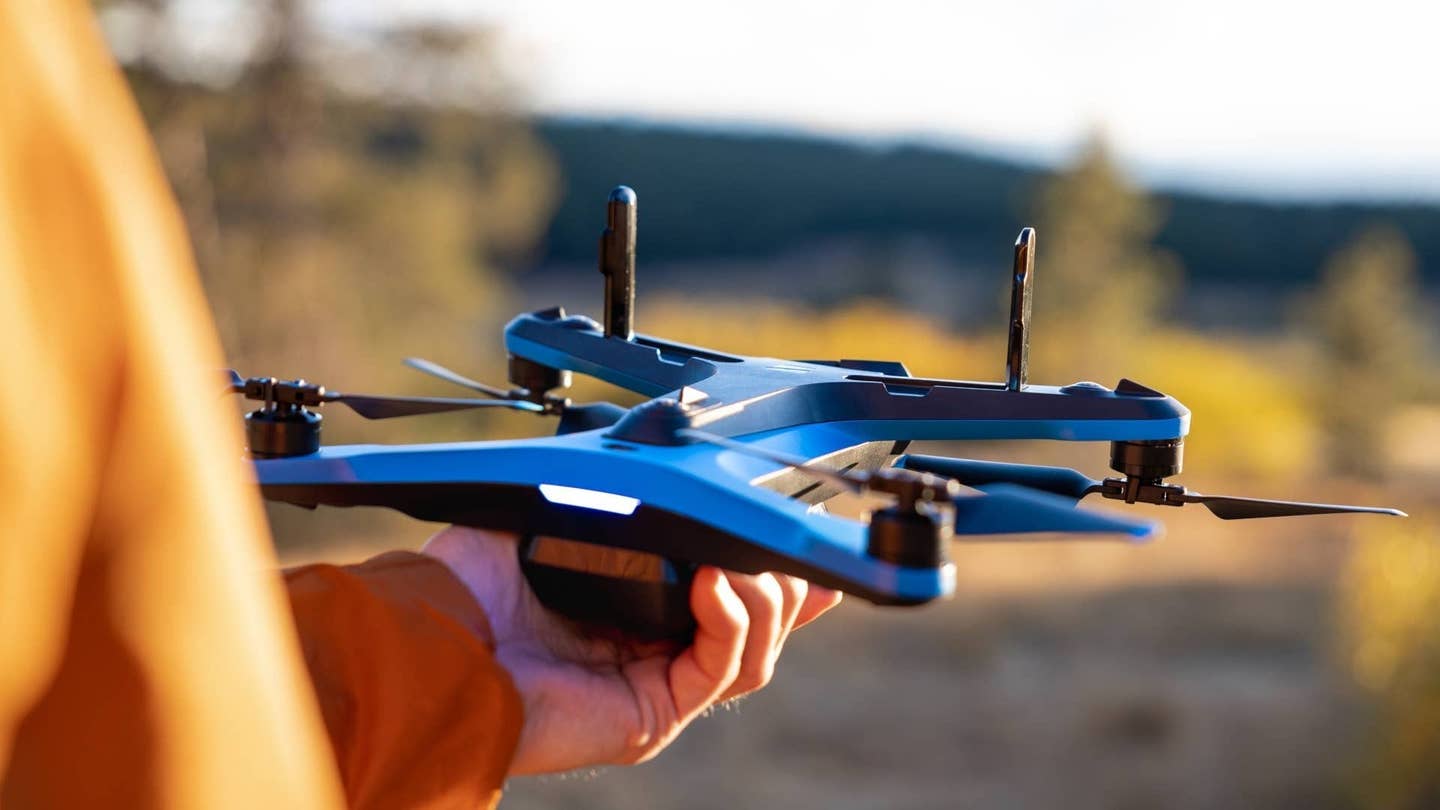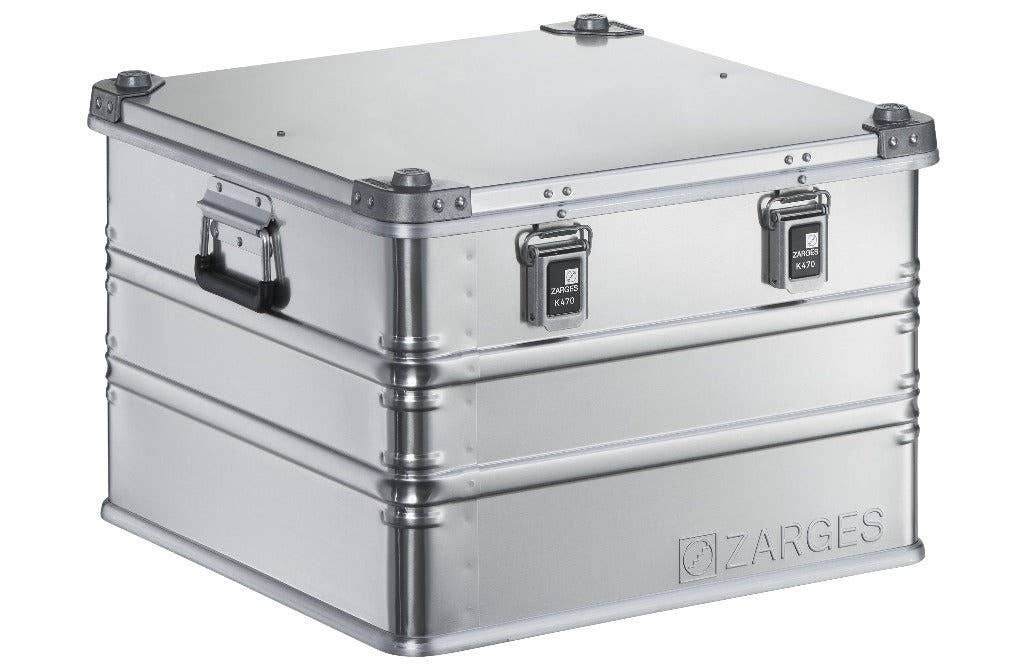Best Hand-Held Aviation Radio Options
A reliable hand-held aircraft radio will help you stay connected—and safe.

Pilots who fly aircraft without electrical systems often use handheld radios because the ability to hear as well as see traffic can increase safety. [FLYING file photo]
Aviation communication is critical for safe and efficient operations, making a reliable hand-held radio an essential tool for pilots. In fact, having a high-quality and user-friendly hand-held aviation radio can make all the difference in maintaining clear and effective communication with air traffic control and other aircraft.
In this article, we'll explore some of the best aircraft hand-held radio options on the market, considering factors such as performance, features, and affordability.
6 Best Aircraft Hand-Held Radio Options
- Best for extended range: Icom A25N
- Best for battery life: Icom A16
- Best for compact size: Yaesu FTA-250L
- Best for built-in GPS: Yaesu FTA-850L
- Best for ease of use: Sporty’s L6
- Best for affordability: Yaesu FTA-550AA
Top Aircraft Band Radios
The choice of a hand-held radio depends heavily on your mission. Whether your priority is ease of use or extended battery life, we’ve amassed a list of the best hand-held radios with popular features to help you make the right choice for your needs.
Icom A25N
The full-featured A25N radio is Icom's flagship radio with all the bells and whistles. The large liquid-crystal display makes menus easy to navigate. Given the A25N’s 6 watts of power, it can transmit anywhere from 8-to-15-plus miles at altitude, making it one of the best radios for extended range operations.
Best for: Extended range
Features:
- Type: Comm/Nav
- Power: 6 watts
- Memory: 300 channels
- Battery: Lithium-ion battery provides up to 10.5 hours of operating time.
- Additional features: Bluetooth, GPS, and VOR navigation available, LCD and key backlight for nighttime operations
- Included accessories: Belt clip, wall charger (115 volt), antenna, rechargeable battery pack, headset adapter, and carrying case
Disadvantages:
- One of the most expensive radios on the market. The comm-only Icom A25C ($499.95) radio may be a more affordable substitute.
- Bluetooth connection can be complex.
Price: $539.11
Icom A16
The Icom A16 is built tough and rugged. This comm only radio is packed with 6 watts of power and an extra loud speaker, however, it is the unit’s massive 17-hour lithium-ion battery that makes it stand out in the battery life category.
Best for: Battery life
Features:
- Type: Comm
- Power: 6 watts
- Memory: 200 channels
- Battery: Lithium-ion battery provides 17 hours of operating time.
- Additional features: LCD and key backlight for nighttime operations, extra loud speaker for clear communications, rugged and water-resistant construction, compact size
- Included accessories: Wall charger, charging base, belt clip, lithium-ion battery, wrist strap
Disadvantages:
- No built-in Bluetooth capability, but the compatible Icom A16B ($399.95) offers Bluetooth connectivity for hand-free operation.
- Difficult unit menu navigation
Price: $269.95
Yaesu FTA-250L
The Yaesu FTA-250L is an affordable, comm-only, rechargeable hand-held radio. This is one of the smallest hand-held radios on the market, making it a perfect flight bag staple that won’t take up much space.
Best for: Compact size
Features:
- Type: Comm
- Power: Five watts
- Memory: 250 channels
- Battery: Lithium-ion battery
- Additional features: Rugged exterior case, NOAA weather, backlit keypad and display with dimmer
- Included accessories: Lithium-ion battery, 110 volt and 12-volt-DC charge with cradle, antenna, belt clip, and headset adapter
Disadvantages:
- Programming is complex. The radio comes with a large user manual.
- Headset adapter usage may require a screwdriver.
Price: $209.95
Yaesu FTA-850L
The Yaesu FTA-850L hand-held radio was engineered to meet the requirements of top aviators. It is a full-featured hand-held radio with a large color display and a built-in GPS.
Best for: Built-in GPS
Features:
- Type: Comm/Nav
- Power: 4 watts
- Memory: 400 channels
- Battery: Lithium-ion battery provides12 hours of operating time.
- Additional features: Color screen, Bluetooth capability, VOR, LOC, ILS, GPS navigation available, loud audio output, PC programmable
- Included accessories: Lithium-ion battery, 110 volt and 12-volt-DC charger with cradle, alkaline battery tray, antenna, belt clip, headset adapter, USB cable
Disadvantages:
- The unit is one of the most expensive radios on the market. The slightly less advanced Yaesu FTA 750L ($429.95) offers similar capabilities at a lower price.
- Complex programming requirements
Price: $449.00
Sporty’s L6
Sporty’s L6 radio allows pilots to unplug their headset from the panel and plug it directly into their backup radio. It is one of the simplest comm-only radios to operate, making it a top contender in the ease-of-use category.
Best for: Ease of use
Features:
- Type: Comm
- Power: 6 watts
- Memory: 20 channels
- Battery: Six AA batteries
- Additional features: Six-pin jacks on top to power LEMO-equipped headsets, 3.5-millimeter jack for earbuds, USB-C power port, backlit screen and keypad, dedicated squelch and volume knobs for precise adjustment
- Included accessories: Alkaline battery pack, wrist strap, antenna, belt clip, power cable, wall adapter
Disadvantages:
- For users with the twin-plug GA headset interface, the Sporty’s PJ2+ ($249) radio may be a better fit.
- It’s a larger and heavier unit than other radios.
Price: $279.00
Yaesu FTA-550AA
The Yaesu FTA-550AA is packed with features, yet very affordable. With an oversized liquid-crystal display, the FTA-550 hand-held radio provides full communication capabilities, as well as VOR and localizer navigation features. Its great features and attractive price make it a top contender in the affordability category.
Best for: Affordability
Features:
- Type: CommM/Nav
- Power: 5 watts
- Memory: 200 channels
- Battery: Six AA batteries
- Additional features: Large display, NOAA weather, loud speaker, backlit keypad and display with dimmer
- Included accessories: Alkaline battery pack, wrist strap, antenna, belt clip, power cable, wall adapter
Disadvantages:
- The AA batteries don't last as long as the more modern lithium-ion battery powered devices. As an alternative, the Yaesu FTA-550L Pro-X ($349.95) offers a lithium-ion battery and charger as an upgrade.
- Radio programming complexity radio
Price: $229.95
Pilot Radio Laws and Regulations
There are several requirements and things to consider when communicating over the radio in U.S. airspace. The FAA requires aircraft operating in most controlled airspace to be equipped with a two-way radio capable of communicating with ATC on appropriate frequencies for that area.
Therefore, most U.S.-registered aircraft have a working VHF radio that is part of the aircraft equipment, and in such cases, the purpose of a hand-held radio is to serve as a backup device in the event the primary radio fails.
The following are requirements and best practices to ensure smooth radio operations.
Licensing and Certification
FAA certificated pilots operating VHF radios and flying within the U.S. do not require any aircraft radio licensing or operator’s permit. Private or commercial pilots who wish to fly outside of the U.S., however, need to obtain a Restricted Radiotelephone Operator Permit from the Federal Communications Commission (FCC).
Frequency Use
Most radios used in the civil aviation sector operate in the VHF and UHF frequency ranges. VHF frequencies span from 108 to 137 MHz. Right above the VHF radio spectrum are UHF frequencies, which span from 300 MHz to 3 GHz. Comm radios are used to transmit and receive communications and operate in the 118-to-137-MHz VHF frequency range.
Nav radios are used for VOR navigation only (not to be confused with GPS navigation) and operate in the 108-to-117.95-MHz VHF frequency range. ILS radios can have the localizer (108.1 to 111.95 MHz) and/or glideslope (329.3 to 335.0 MHz) capabilities and operate in their respective VHF and UHF frequency ranges.
Radio Procedures and Phraseology
Radio communication between pilots and controllers is a critical link in the ATC system. It is essential, therefore, that pilots acknowledge each radio communication with controllers by using the appropriate aircraft call sign, keep the contact brief and to the point, all while using the appropriate phraseology.
Tips for Choosing the Best Aviation Hand-Held Radio
There are several questions one should ask themselves when shopping for a hand-held radio:
- What is your primary reason for buying a radio?
- How often do you plan to use it?
- How tech savvy are you?
- What is your budget?
- What features are important for your needs?
There is a hand-held radio for every mission. Here are some items to consider when narrowing down your list:
- Comm only vs. Comm/Nav: While CommM/Nav capability was important 20 years ago, when GPS arrived, it took the flight deck by storm. Backup nav for most pilots comes in the form of a GPS installed on the aircraft, an iPad with an ADS-B receiver attached to it, and/or the cell phone in your pocket.
- ILS: ILS capabilities are not all created equal, so make sure to really look at the radio’s features to verify whether it provides localizer navigation, glideslope navigation, or both.
- Memory channels: More memory isn’t always better. When there are 200 memory channels, you must have a way to recall them. Some more complex radios with memory banks available can be difficult to access.
- Battery type: Although rechargeable batteries are great for high use, they aren’t convenient as a backup source because their charge must be maintained.
- Weight and size: While glider pilots prefer small and lightweight radios, linemen may require loud radios. There’s a radio for every mission, so make sure you pick the one that meets your unique needs.
- Simplicity: Although some state-of-the-art radios may seem attractive because of their many added features, there’s beauty in simplicity—especially when dealing with an emergency.
- Know before you go: Learn how to use your radio before you really need to use it. An emergency isn’t the time to be fumbling through a user manual.
Play it Safe With the Right Hand-Held Aviation Radio
Although a hand-held radio isn’t strictly required, it does offer a level of communication and navigation redundancy when conditions deteriorate. Because aviation is naturally a high-risk environment, having a backup is always a good idea. Find the radio that’s right for your mission and never get caught unprepared.
Now that you have the radio you need, check out other flight gear essentials. Learn what gear to fill your pilot bag with now.
FAQ
Is there an app for listening to aviation frequencies?
LiveATC.net provides live ATC broadcasts from control towers and radar facilities around the world. The LiveATC app is available for both iPhone/iPad on the App Store, as well as for Android devices on Google Play.
Do military aircraft talk to civilian ATC?
Military aircraft have transponders that can reply to civil ATC radar and TCAS interrogations.
What is the range of the airband scanner?
Airband scanners can pick up signals from 30-50 miles away with a clear line of sight.

Sign-up for newsletters & special offers!
Get the latest FLYING stories & special offers delivered directly to your inbox






